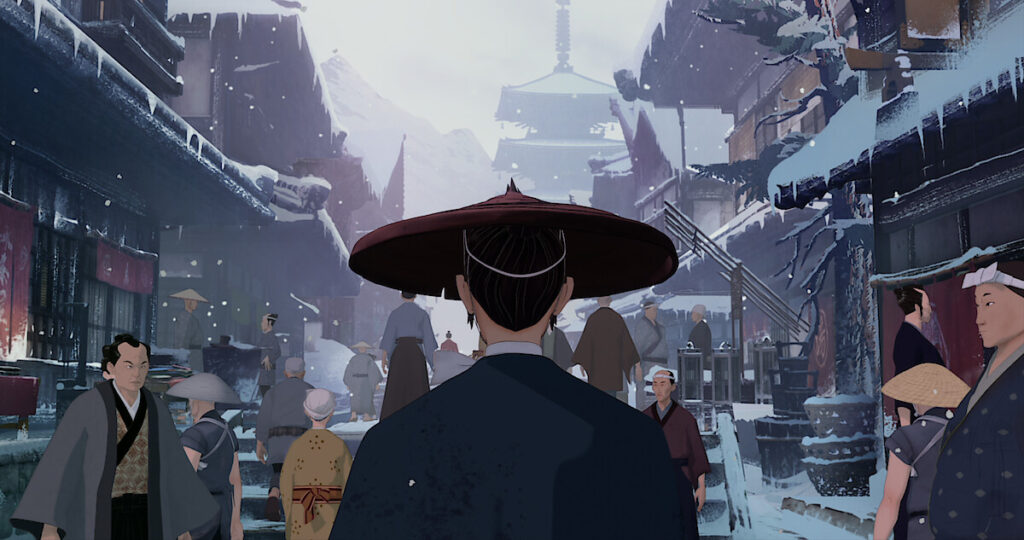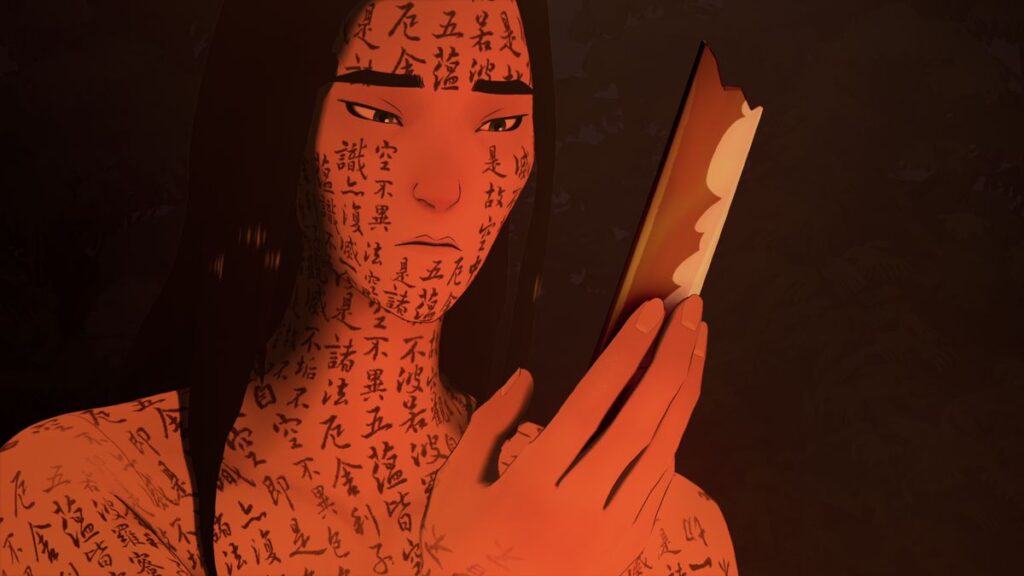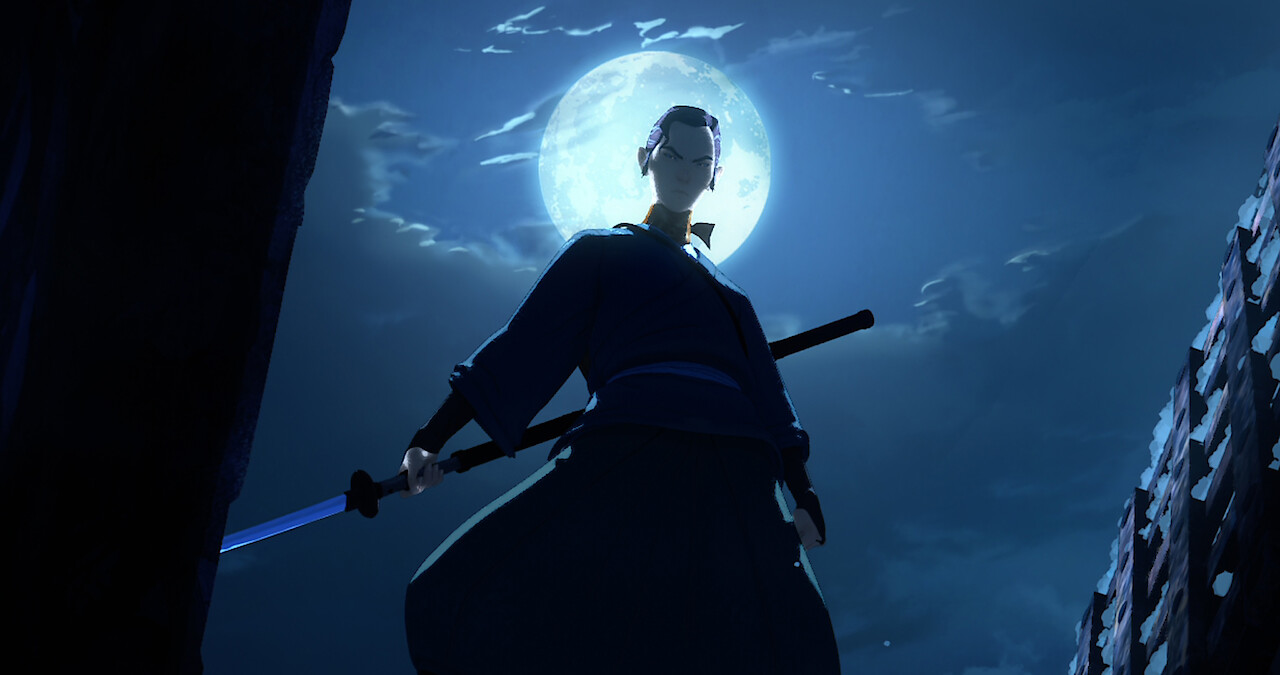What comes to your mind whenever you think of a samurai? Usually, a man with sharp eyes, wearing traditional armor, wielding a katana sword, and who is ready for any challenge. But have you ever imagined a female samurai? The story of the series “Blue Eye Samurai” will take you on a thrilling journey through the life of a remarkable mixed-race female swordmaster, Mizu, who quests against four white men to seek her unfulfilled revenge.
This animated series is based on the Edo period of Japan during the time of the Tokugawa shogunate. Japan was enclosed from the outside world, and samurais were the elite warriors who served the ruling class. There were European men in Japan during this time who used to engage in trade, and many of them had illegitimate children there. When the shogunate was established, these white men were eradicated from Japan, and these mixed-race children, who were considered “white devils,” were brutally killed. Mizu’s mother was raped by these white men, resulting in her birth. Because she had blue eyes, her mother had to hide her and dress her up like a boy. One day, despite her mother’s warnings, she went outside and was spotted by the natives. Mizu’s mother was burned alive for giving birth to such a child, but somehow Mizu survived. After witnessing her mother’s death, she vowed to seek justice for what had happened to her, and with a burning determination, Mizu set out on a journey to discover the truth about her origins and the white men.
In flashbacks, we witness her being bullied by the local children. A blind sword maker, believing her to be a boy, takes her in as an apprentice. He raised and trained her in sword-making art and Mizu worked hard to become a powerful warrior who would be undefeatable. Later on, she got married to a samurai and horse breeder named Mikio. Mizu finally thought she had found the love and stability for which she had longed for years. But her happiness was short-lived when Mikio betrayed her, and once again Mizu realized the banality of this cruel world.
The whole series revolves around Mizu’s struggle for justice as she navigates a tough journey to find these four white men. As Mizu embarked on her journey, she encountered various obstacles and adversaries along the way.
She met new people from whom she learned valuable lessons about trust, loyalty, friendship, love, and the true meaning of justice.
Despite facing numerous challenges, Mizu’s determination never wavered, fueling her relentless pursuit of revenge and ultimately leading to a climactic showdown that turns her life around.

There are a couple of things that drew my attention in “Blue Eye Samurai”, and one of those is the animation. It is extremely realistic. It has a somber tone, but the fight scenes are very vibrant, colorful, and detailed. The overarching story about Japan’s isolationism, the Western influence, cultures, and traditions made the historical depiction of that era on point. The characters’ arcs progressed with one another. Each of them was connected in many different ways and levels, which spurred the story forward.
The main attraction of the series was the amazing fight scenes. The battles were gory and intense, portraying skill and precision. They were beautifully choreographed, and the fluidity of the animation created a wonderful visual experience. Mizu was undefeatable in most of the fights, and with her amazing sword techniques, she left a formidable impression.
The story also highlights the hardships of the women living in the Edo period. Unless a woman was from an aristocratic family or married, she had limited opportunities and freedom, and faced extreme hardships. Women were deemed inferior to men and were expected to conform to society’s expectations. If someone could not secure a marriage, they would end up in a brothel and sell themselves to survive.
The characters of the series were well-developed, each with their own unique struggles and stories.
There were unconventional, strong female characters like Mizu and Princess Akemi who fought for their own independence. The supporting roles of Taigen, a fellow samurai, and Ringo, Mizu’s apprentice, elevated the overall narrative and upheld the value of friendship and loyalty.

The voice cast included Darren Barnet, Maya Erskine, Brenda Song, Randall Park, Masi Oka, and many other talented actors who brought life to their respective characters with their exceptional performances. Maya Erskine wonderfully brought out Mizu’s character, emotions, and feelings only with her voice. Darren Barnet, who we know as “Paxton” from “Never Have I Ever,” delivered an outstanding performance as Taigen, proving his versatility as an actor. The story was created and written by Michael Green and Amber Noizumi, who expertly crafted a compelling and immersive world for the audience to explore.
“Blue Eye Samurai” is not more than just an animated series; it’s a masterful tapestry of history, revenge, and redemption.
The series indicates a second season by showing Mizu’s new-found journey to London to find her alleged father, hinting at the possibility of new adventures and challenges awaiting her. The series was praised by the audience as the best adult animated series on Netflix in 2023, and we truly can’t wait to see what lies ahead for her or how the story will continue to unfold in the future.






















